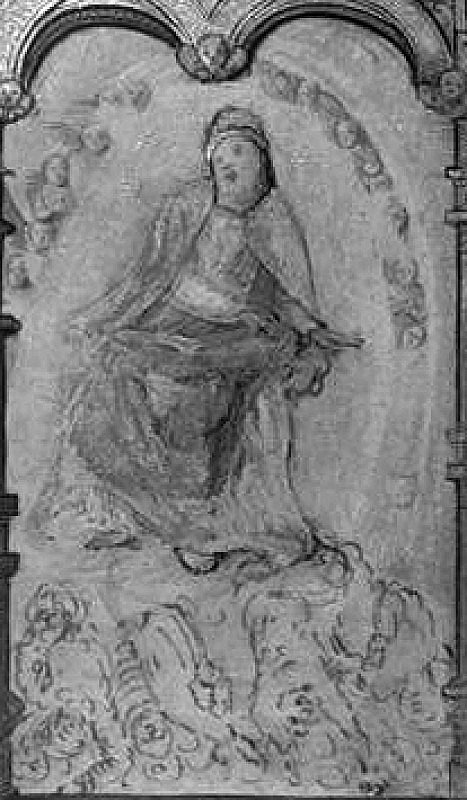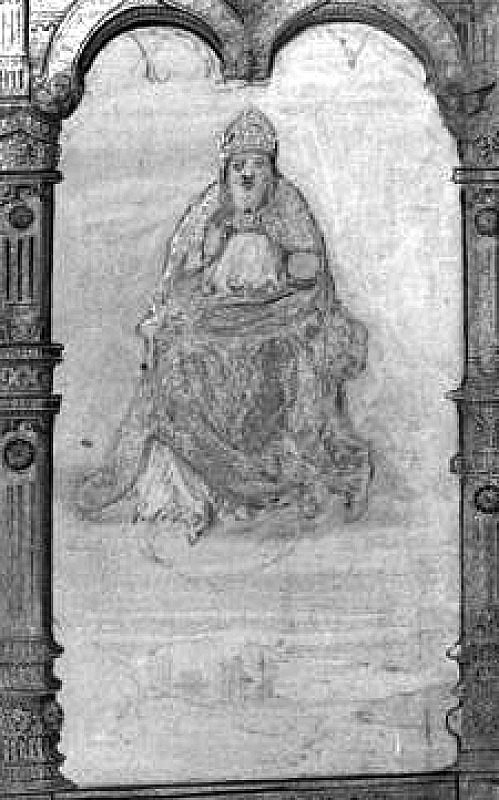Pentimenti
Artists' Techniques
The artist made several small changes to his compositions, as shown by elements which were sketched but never painted.
Notable examples include the serpent’s wing on fol. 4r, a carpet in the lower left scene on fol. 5v and the angel appearing in Joseph’s dream on fol. 7v.
A more significant change, which probably involved the entire scene, was made to the image of God and Gabriel on fol. 7v. The infrared image clearly shows the presence of an architectural interior, with arches at the top and a column on the right. The lower portion of a figure’s crossed legs is also visible, as well as his feet.
Select the ‘infrared’ layer and explore the hotspots in the folios on the right to see the pentimenti.



God creating Heaven and Earth; God creating Angels; God creating animals and birds
The rectangular panel in the upper border above the text block shows the Arma Christi, the Instruments of Christ’s Passion (pincers, hammer, cross with crown of thorns, nails, lanterns, scourges, dice, whips, column with ropes, ladder, and rooster). It was customary for children to make the sign of the cross and to say the words In nomine Patris, et Filii, et Spiritus Sancti, Amen (‘In the name of the Father, and Son, and Holy Spirit, Amen’) before reciting their ABCs. Here, the cross of the Arma Christi extends into the text block, just before the A of the alphabet, to prompt Claude to perform this devotion.
The large brush strokes in the azurite blue sky of the upper right scene hide a pentimento, invisible even in the near-infrared image because azurite still absorbs light at these wavelengths (800-1000 nm). Infrared reflectography, however, reveals the presence of small pointed arches, and the different shape of the clouds below God the Father’s feet (hotspot 3).
